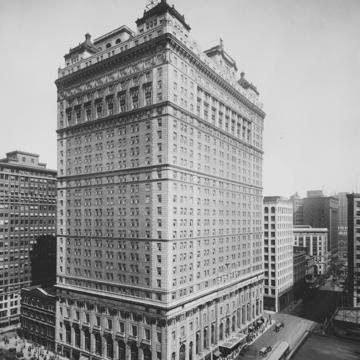You are here
Westin Book-Cadillac Hotel (Book-Cadillac Hotel/Sheraton Cadillac Hotel)
Closed since 1984, the refurbished hotel reopened in 2008 to serve people attracted downtown for sports games, concerts, and conventions. John Ferchill of Ferchill Group in Cleveland purchased the hotel and reopened it as the 455-room Westin Book-Cadillac Hotel with three ballrooms. The top eight floors house sixty-seven upscale condominium units and penthouses. Funding for the rehabilitation came, in part, from federal historic preservation tax credits and placing a conservation easement on the hotel.
The Book brothers built the Book-Cadillac Hotel on the site of the earlier Cadillac Hotel. Named for Antoine de la Mothe Cadillac, the French fur trader who founded Detroit in 1701, that hotel was demolished to make way for this hotel. Here it anchors Washington Boulevard on the south and was within walking distance to the Fort Street Railroad Station and within a short cab ride to Michigan Central and Grand Trunk stations. The hotel opened at the height of Detroit's prosperity from the automobile industry.
The Italian Renaissance–inspired hotel was Detroit's tallest building and the world's tallest hotel at its opening. The stone base of the building rises five stories, giving way to a sixteen-story shaft encircled with belt courses, and culminates in a four-story corniced top above which are two-story pavilions. The hotel held 1,136 guest rooms, each with a bathroom, and ballrooms and dining and other public rooms.
Writing Credits
If SAH Archipedia has been useful to you, please consider supporting it.
SAH Archipedia tells the story of the United States through its buildings, landscapes, and cities. This freely available resource empowers the public with authoritative knowledge that deepens their understanding and appreciation of the built environment. But the Society of Architectural Historians, which created SAH Archipedia with University of Virginia Press, needs your support to maintain the high-caliber research, writing, photography, cartography, editing, design, and programming that make SAH Archipedia a trusted online resource available to all who value the history of place, heritage tourism, and learning.


